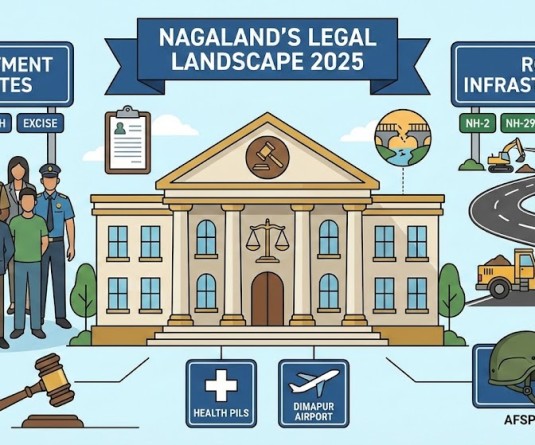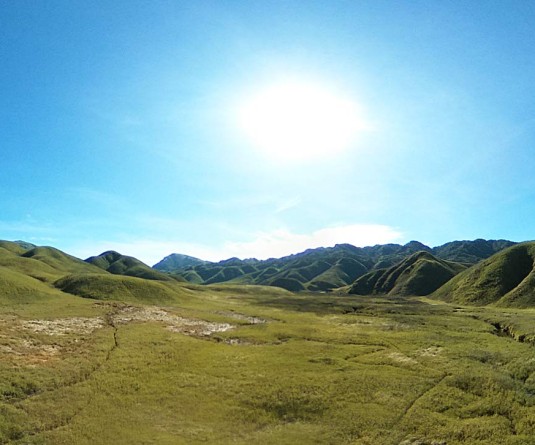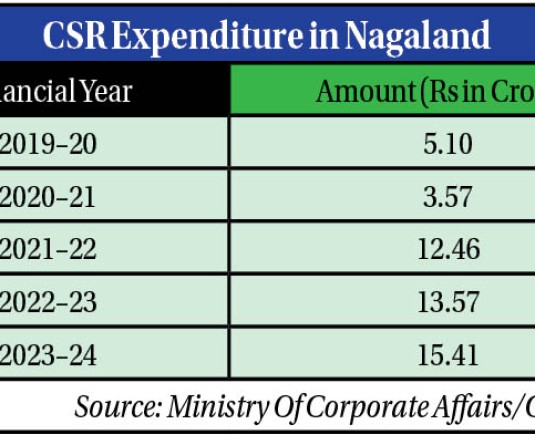
Vishü Rita Krocha
Kohima | January 12
“If the Nagas of the entire Naga Homeland do not want to claim their common peoplehood and nationhood identity today which the facts of their short modern history fully justify legally, politically and historically, the Memorandum will be a priceless fact of their history wasted which later the coming Naga generation will not forgive.”
These are the thoughts of noted Peace Activist, Niketu Iralu on the relevance of the Naga Memorandum to the Simon Commission of 1929 in the present Naga context. In an exclusive interview with The Morung Express, he remarked that “the Memorandum in writing made clear the Nagas knew if the British were to leave their South Asia Empire, the Nagas who had fought resolutely not to be a part of it, had the right to decide their own future - whether to be part of any other post-Empire new nation or themselves become a new nation as warranted by the facts of their history. They reclaimed that right.”
18 years later in 1947, August 14, he said, “they simply reaffirmed that position as their right” while also pointing out that, “because of this, Nagas have the right to say their struggle was not secessionist, not anti or against India.” He further elucidated that, “they declared their independence one day before India, not because they intended to damage the new India. They were reclaiming their status from the British whom they had fought. They had not fought India. India was a number of separate kingdoms against one another then.”
Underlining that Nagas cannot become a sovereign nation member of the UN because they cannot defeat the Indian Army, he emphasised that, “they have the right for self-determination without being a member of the UN. This status must not be discarded because of thoughtlessness, etc.”
While a lot remains to be said about the significance of the high-powered British Simon Commission, that, in his words, had been sent out “to ascertain the wishes of the Indian people for reform measures” coming as far east as Kohima to get what the Nagas had to say, tiny in terms population, Iralu maintained that this decision by the British at that time is the most striking thing to him even today.
‘Striking but most admirable’
For Neingulo Krome, Secretary General of Naga Peoples’ Movement for Human Rights (NPMHR), “the most striking thing is the central concept of the memorandum to remain free from any alien rule, particularly under the Reformed Scheme of India, which will put Nagas within the ambit of the then British-India, but would rather be under the direct control of the British.”
“And to say that our lands would be taken away if taxes are imposed and other foreign laws will supersede the Naga customary laws,” he supplemented.
In this context, he specified that the ability to zealously “defend our Naga ways of life which may be “wild” but “free” is not only striking but most admirable.” Therefore, he stated that, “the assertion for the right to be free is the bottom-line and the foundation of our nationality which is still not only relevant but our standing point even in the present day Naga context.”
Contemporary realities
Asserting that Naga leaders were far ahead and led not only by wisdom but that ‘divine hand’ was also upon them, Rev Dr Wati Aier, Convenor, Forum for Naga Reconciliation (FNR) espoused that the essence of the Naga spirit was expressed by the Simon Commission.
He went on to say that, “this should be the guiding road map for the Naga people” and should be upheld. He meanwhile expressed concern that every year, “we romanticise the commission and that’s where it ends.”
On how young people can find relevance in this regard, he expressed that, “young people are much more imaginative, and we must not underestimate the young minds.” “We have to bring them to the forefront and give them the opportunity,” he said.
Further pointing out that just by looking back, one cannot walk forward, he underscored that, “the essence of the Naga spirit will have to be expressed in the historical context.” In this regard, he also articulated that the essence alone is not enough as it is very subjective, and underscored that, “it has to be translated into fitting forms that suit us.”
“We should look at the world from the contemporary context. Our socio-political thinking must be in line with the contemporary realities,” he affirmed.
95 years since the Simon Commission
Meanwhile, historian and former Chairperson of the Nagaland Public Service Commission (NPSC), Zapra Chakhesang recalled that the British followed a consistent policy of non-interference in the affairs of the Nagas and Naga Hills calling them “Free Nagas”, “Forbidden land”, “No Man’s Land”, “Unadministered Naga Area” or “Naga Self-Administered Zone”(NSAZ).” This was done, he stated, even while knowing full well that “the Nagas are a free people” with a distinct race and a unique history separate from all other ethnic groups, during their entire rule in Assam (India) and Burma.
Highlighting that the purpose of the Simon Commission coming to Naga Hills, besides aiming for constitutional reforms, he said that, “it was also eager to survey and know the pulse, opinion and consent of the Naga people; whether they would like to join India or Burma, when the actual separation of the two big provinces/countries takes place.”
“The Simon Commission consisted of seven members under the joint Chairmanship of Sir John Allsebrook Simon and Clement Richard Atlee to study the constitutional reforms in India,” he highlighted, and pointed out that they came to Kohima on January 10, 1929, which would also mean that it is precisely 95 years since.
Chakhesang added that the Nagas did not tell the Simon Commission that they would join India or Burma. Instead, he said, the Nagas under the banner of Naga Club submitted a memorandum to the visiting commission demanding that “the Nagas be left alone and free as they were before to determine their own future from the day the British leaves India.”
He emphasised that, “this clearly shows the Nagas had completely rejected to join India or Burma.” He further reminded the memorandum as stating: “We should not be thrust to the mercy of the people who could never subjugate us, but leave us alone to determine for ourselves as in ancient time.”






